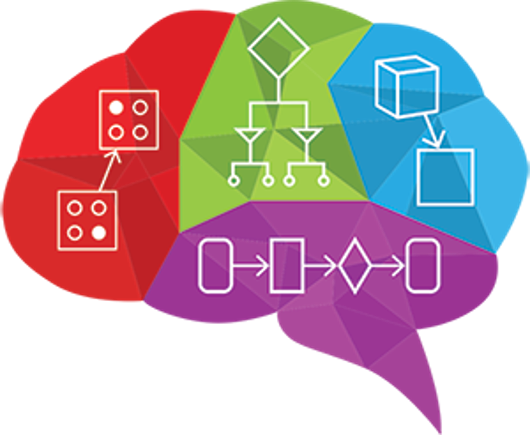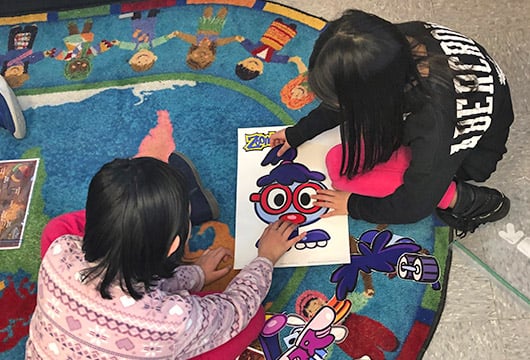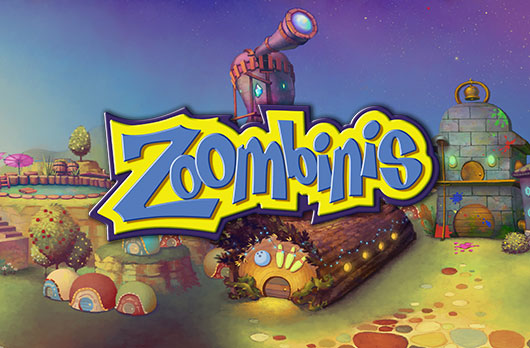TERC Blog
Computational Thinking and Game-Based Learning
Part 3. Understanding Computational Thinking: An Interview with Jodi Asbell-Clarke
Mike and Teon here yet again with more from our interview with Jodi Asbell-Clarke. One of Jodi’s recent Computational Thinking (CT)-related projects was a national implementation study around the game Zoombinis.
Zoombinis is an award-winning puzzle game developed by TERC in the 1990s and rereleased for modern computers and tablets in 2015. In the game, players guide groups of little blue characters, called Zoombinis, through increasingly difficult logic puzzles, as they flee the evil Bloats and journey to a new homeland.
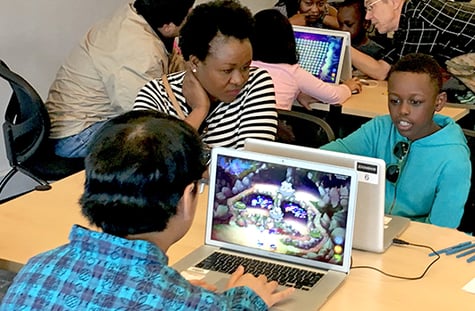
Teon: Jodi, as you mentioned earlier, some of your CT work has focused around the game Zoombinis. Can you talk to us a bit about how computational thinking, or the four fundamental practices you mention, are shaped or even defined by your work with Zoombinis?
Jodi: It’s complicated, but basically, we watched kids solve the puzzles in Zoombinis—many, many kids and many, many iterations of the puzzles—and we had researchers identify those four practices [problem decomposition, pattern recognition, abstraction, and algorithm design] within the kids’ game play.

Mike: Can you talk to us a bit more about how this research actually worked?
Jodi: We used a process in Zoombinis that we’ve used with other games to study what we call implicit learning—learning that can’t be necessarily articulated on a test or in a question, but that manifests itself as behaviors or practices within a game.
What we do first is watch players either in real time or video, on Screenflow, and listen to what they’re saying as they solve the problems.
After that, we collect the back-end data, meaning the events corresponding to all the clicks or drags in the game, as well as the events that make up the game play and related data, such as timestamps. Together, this creates a data log for each player. And we can use these data logs to re-create a video of the game play, with a simulated playback tool we’ve developed.
We then have two researchers examine the video replay of many players (around a hundred for this study) and human code the data for the four CT practices and evidence of those practices. And we do that until we reach high inter-rater reliability between those two researchers. Once we have that, we have the evidence we’re looking for in the data logs and we can build automated detectors to build that data.
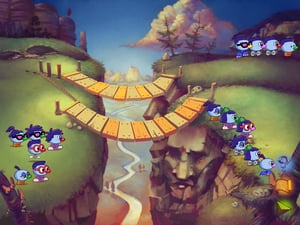
Mike: So let me get this straight. After what sounds like a lot of hard work and analysis, you’re now able to collect data from players of Zoombinis, and through the use of detectors, identify when players demonstrate your four fundamental practices of CT: problem decomposition, pattern recognition, algorithm design, and abstraction … at least as they appear within the Zoombinis puzzles?
Jodi: Yes. We knew those practices were embedded in the problem solving that one must do to be successful at Zoombinis. So our task was to operationalize those practices in the context of Zoombinis enough that we could seek evidence of those practices within the game play.
Now that we have those detectors, we can identify the practices in an unlimited number of players without having to go and spend time or resources on site collecting that data.
Mike: That’s amazing.
Teon: Jodi, this work was part of a nationwide NSF-funded implementation study of the computational thinking learning within the game Zoombinis. Can you tell us more about that broader study?
Jodi: In our study, we recruited classes who would have the kids play the game and bridging activities—classroom activities that bring the game alive into the classroom and connect gameplay with classroom content. And we studied the effect of the game, as well as the effect of game plus bridging on student learning of computational thinking.
Mike: And what did you find?
Jodi: Well, here is the main takeaway ... Overall, the more kids play Zoombinis and the more they demonstrate computational thinking practices in their gameplay, the better they did on outside measures of CT. Neurodiverse learners appeared to particularly excel. In fact, in a small sub-study, we found we couldn’t see a difference in outcomes, after the use of Zoombinis and related activities, between kids who had IEPs (Individual Education Plans for neurodiversity) and those who didn’t. The numbers were low in that sub-study, so we want to do further research, but we’re still really excited by the result. Zoombinis, with bridging, seems to have a positive impact on computational thinking learning.
This is the second installment of our interview with Jodi Asbell-Clarke. Later, she will discuss how her computational thinking research has broadened. She will also talk about how it is now focusing more on neurodiversity and executive functions.
Navigate to other blog posts in this series here:
- Bonus Article - What is Computational Thinking? Teachers' Understands of Computational Thinking

